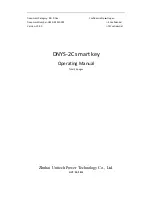
3
BÜCHI
Rotavapor
R-220
2 Safety
2
Safety
This unit has been built in accordance with the latest state of
the art and with recognized rules of safety.
Nevertheless there are certain risks and dangers entailed with
this unit:
•
whenever the unit is operated by individuals who lack
sufficient training;
•
whenever the unit is used for some purpose other than its
authorized use.
2.1
Symbols
Stop
Information on dangers that can cause serious material
damage and severe personal injuries or death.
Warning
Information on dangers that can be injurious to one’s health
or cause material damage.
Note
Information pointing out technical requirements. A failure to
observe such information can lead to malfunctions, uneco-
nomical operation, and losses in production.
2.2
Responsibilities of the Operator
This unit may only be used by technical staff and by individuals
who, based on their training or their professional experience,
have a good understanding of the dangers that can arise
from the its operation.
Staff who do not have this training and individuals who are
currently in training must be given careful instructions. This
Operating Manual should be used as the basis for such training.
2.3
Authorized Use
The rotary evaporator has been designed for use in technical
laboratories and in production. It is authorized for use in applica-
tions that work with the evaporation and condensation of
solvents.
It is used for:
•
Evaporation of solvents and suspensions
•
Drying of powders and granulates
•
Re-crystallization
•
Reactions under reflux
•
Synthesis and Cleaning of refined chemicals
•
Recycling and concentration of solvents
The authorized use of the Rotavapor also includes its care,
upkeep, and careful handling in accordance with the provisions
in this Operating Manual.




































